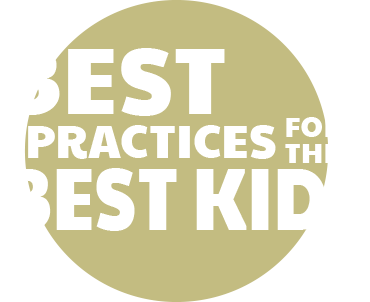
Fine Motor Skill Activities for Three and Four Year Olds
Fine motor skills shape so much of a child’s independence—zipping up a jacket, holding a spoon, or drawing their first stick figure. These small but mighty movements require strength, coordination, and patience, all of which develop over time. For preschoolers, the hands and fingers are still learning to work together in precise ways, setting the stage for writing, self-care, and countless everyday tasks.
At this stage, your child may be experimenting with scissors, stacking small blocks, or even attempting to button their own shirt. These moments, big and small, are signs of growing control and confidence. The key? Plenty of hands-on practice, playful challenges, and encouragement along the way.
Short Answer: How to Improve Your Toddler’s Fine Motor Skills
To help your preschooler strengthen fine motor skills, encourage activities that involve grasping, pinching, and coordinating hand movements. Simple tasks like playing with playdough, stringing beads, or using child-safe scissors can build hand strength and dexterity. These skills lay the foundation for everyday independence—turning scribbles into letters, clumsy spoonfuls into steady bites, and tiny hands into capable ones.
Understanding Fine Motor Development in Three and Four Year Olds
Fine motor skills are what allow children to grasp, pinch, twist, and manipulate small objects with their hands. These movements may seem simple to adults, but for young children, they are complex skills that require practice and patience. Every time a child buttons a coat, stacks blocks, or carefully flips through the pages of a book, they are refining these essential movements.
At ages three and four, preschoolers are strengthening the small muscles in their fingers and hands, which will eventually help them write, cut with scissors, and perform everyday self-care tasks like brushing their teeth. You might notice your child experimenting with drawing lines and circles, using utensils with more control, or attempting to fasten their own shoes. These milestones don’t happen overnight—they unfold gradually as children gain strength and coordination. Encouraging hands-on activities that challenge finger dexterity and hand-eye coordination will help your child build these skills with confidence.
Engaging Activities to Enhance Fine Motor Skills
One of the best ways to support fine motor development in preschoolers is through play. Children naturally build hand strength and coordination when they engage in activities that require grasping, squeezing, pinching, or manipulating objects. Here are some simple but effective ways to support fine motor growth at home or in the classroom:
Artistic Expression
Providing children with crayons, markers, and paintbrushes gives them opportunities to practice controlled hand movements. Encourage them to experiment with different grips and strokes—scribbling today becomes letter formation tomorrow. Cutting paper with child-safe scissors is another great way to build hand strength while giving kids a creative outlet.
Manipulative Play
Playdough is a powerhouse tool for fine motor skills. Squeezing, rolling, and shaping dough strengthens hand muscles in a way few other activities can. If your child enjoys sensory play, try adding small objects like buttons or beads to the dough for an added challenge—pinching them out requires precision and patience.
Bead Stringing and Lacing
Threading large beads onto a shoelace or weaving laces through cardboard holes is a fantastic way to develop the pincer grasp. This skill is essential for later writing and drawing tasks. Start with larger beads and progress to smaller ones as your child’s hand control improves.
Cutting and Pasting
Using scissors is a big step in fine motor development. Give your child thick paper to start with—it provides more resistance, making cutting easier to control. Encourage them to snip along straight and curved lines before attempting more complex shapes. Gluing pieces together afterward reinforces spatial awareness and coordination.
Building and Stacking
Lego bricks, wooden blocks, and other construction toys require careful placement and manipulation, helping to refine coordination. Activities like these also teach patience and problem-solving, which are just as important as motor skills in early childhood.
Sensory Bins
Filling a container with materials like rice, beans, or sand and adding small objects for sorting or scooping creates a fun, hands-on experience that builds fine motor control. Using tongs or tweezers to pick up objects adds an extra level of challenge, encouraging precision.
Incorporating Fine Motor Development into Daily Routines
Fine motor skills don’t just develop during structured activities—everyday moments offer plenty of opportunities for growth. By encouraging independence in small tasks, you help your child strengthen their hands while building confidence in their abilities.
Dressing Skills
When you give your child time to button their coat, zip their jacket, or pull up their socks, they’re practicing the precise finger movements needed for more advanced fine motor tasks later on. Preschool-aged children may still struggle with small buttons or tricky fasteners, but letting them try builds both patience and coordination.
Mealtime Independence
Using utensils, opening snack bags, or pouring water from a small pitcher helps children refine their grip strength and hand control. If your child is still using their fingers for everything, try introducing small forks and spoons that are easier to hold.
Helping Around the House
Simple chores like sorting laundry, wiping the table, or tearing lettuce for a salad all encourage the pinching, grasping, and twisting motions that build hand strength. The goal isn’t perfection—it’s practice. Even something as small as turning a doorknob or squeezing toothpaste onto a toothbrush contributes to the bigger picture of fine motor development.
Monitoring Progress and Addressing Challenges
Every child develops fine motor skills at their own pace, but if you notice your child struggling with everyday tasks that require hand control—like holding a crayon, using utensils, or buttoning a shirt—it might be worth paying closer attention.
Observation and Assessment
Take a step back and watch how your child interacts with objects. Are they using both hands? Do they avoid tasks that require small finger movements? Some children naturally favor gross motor skills (big movements like running and jumping) over fine motor tasks, so they might need extra encouragement to slow down and focus on smaller motions.
Identifying Difficulties
If your child frequently becomes frustrated or avoids activities like coloring or stacking blocks, it could be a sign that they need more practice or a different approach. Strengthening fine motor skills takes time, and not every child enjoys traditional activities. Sensory play, squeezing stress balls, or even finger painting can be great alternatives.
When to Seek Guidance
If fine motor difficulties persist beyond typical preschool years, talking to a pediatrician or occupational therapist can provide insight into next steps. Small interventions early on can make big differences in a child’s ability to navigate their world with confidence.
Unique Strategies for Fine Motor Skill Enhancement
Sometimes, the best way to strengthen fine motor skills is by thinking outside the box. Not every child enjoys traditional activities like tracing letters or cutting paper, so finding creative alternatives can make all the difference.
Fingerplay Songs and Rhymes
Classic songs like The Itsy Bitsy Spider or Wheels on the Bus aren’t just catchy tunes—they encourage finger isolation, coordination, and dexterity. When a child wiggles their fingers to mimic raindrops or makes circles for wheels, they’re engaging in meaningful fine motor practice without even realizing it.
Imaginative Play
Letting children dress dolls, manipulate action figures, or play pretend with kitchen sets gives them endless opportunities to refine small hand movements. Something as simple as twisting the cap off a toy jar or pressing tiny buttons on a play cash register builds hand strength and control.
Final Thoughts: Fine Motor Skill Activities for Three and Four Year Olds
Developing fine motor skills is a gradual process, shaped by everyday experiences and hands-on play. Whether your child is threading beads, buttoning their coat, or scribbling their first attempt at a letter, every small movement contributes to greater independence and coordination.
As caregivers, we can create a world where fine motor growth happens naturally—through playful moments, daily routines, and plenty of patience. By observing, encouraging, and adapting activities to match your child’s interests, you help lay the foundation for skills they’ll use for a lifetime. After all, every masterpiece starts with a single crayon stroke, and every confident step toward independence begins with small, practiced motions.
If you’re in the Trumbull or Shelton, CT area and need an expert team of caretakers to help your child with fine motor skills, give us a call!

We’ve created an environment where your child will feel physically and emotionally secure and happy. Feeling secure unlocks confidence and learning potential, allowing for natural exploration and inquiry about the world. Find out more today!
Nothing is more important than your child's safety and security. Strong Start is built on the promise of creating an environment where all children feel physically and emotionally secure. That sense of security and peace of mind will be extended to you as a parent as well.
SEE STRONG START ON NATIONAL NEWS!
Featured on CBS Eye On The Money Segment
SEE STRONG START ON NATIONAL NEWS!
Featured on CBS Eye On The Money Segment



